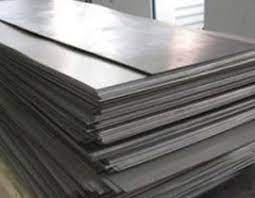Stainless steel plates are versatile and widely used components in various industries due to their exceptional properties and durability., we will into the key characteristics, applications, manufacturing processes, and benefits of stainless steel plates.
1. Characteristics of Stainless Steel Plates
- Corrosion Resistance: One of the most notable features of stainless steel plates is their exceptional corrosion resistance. This resistance is primarily due to the presence of chromium, which forms a passive chromium oxide layer on the surface of the steel, protecting it from rust and corrosion in various environments.
- Strength and Durability: SS plates offer excellent mechanical properties, including high strength and durability. They can withstand high temperatures, pressure, and mechanical stress, making them suitable for demanding applications in industries such as construction, automotive, and manufacturing.
- Hygienic Properties: Stainless steel plates are easy to clean and maintain, making them ideal for applications where hygiene is crucial, such as in food processing facilities, hospitals, and laboratories.
- Aesthetic Appeal: Stainless steel plates are available in various finishes, including polished, brushed, and satin, offering versatility in design and aesthetics.
- Recyclability: Stainless steel plates are environmentally friendly materials as they are fully recyclable. People can recycle and reuse them without losing their properties, making them a sustainable choice for various applications.
2. Applications of Stainless Steel Plates
Stainless steel plates find widespread use across numerous industries and applications due to their versatility and performance characteristics:
- Construction: The construction industry commonly uses stainless steel plates for structural components, building facades, roofing, and cladding because of their strength, durability, and corrosion resistance.
- They are also used in architectural features such as handrails, balustrades, and decorative panels.
- Automotive: In the automotive industry, stainless steel plates are utilized for manufacturing various components, including exhaust systems, automotive trim, and structural reinforcements.
- Their corrosion resistance and aesthetic appeal make them ideal for both exterior and interior automotive applications.
- Food Processing: Stainless steel plates are essential in the food processing industry due to their hygienic properties and resistance to corrosion from food acids and chemicals.
- They are used for food preparation surfaces, storage containers, processing equipment, and kitchen appliances.
- Chemical and Pharmaceutical: Stainless steel plates are widely used in chemical processing plants and pharmaceutical facilities for storing and handling corrosive chemicals and pharmaceutical ingredients.
- Their corrosion resistance and easy cleanability make them suitable for critical applications in these industries.
- Marine and Offshore: In the marine and offshore industries, stainless steel plates are used for shipbuilding, offshore platforms, and marine equipment due to their corrosion resistance to saltwater and harsh marine environments.
- They are also used in coastal structures, seawater desalination plants, and marine infrastructure.
3. Manufacturing Processes of Stainless Steel Plates
Stainless steel plates are manufactured through various processes to achieve the desired dimensions, properties, and surface finishes:
- Hot Rolling: In manufacturing stainless steel plates, the initial step involves hot rolling stainless steel ingots or billets. This process heats them to high temperatures and passes them through rolling mills to reduce their thickness and shape them into plates.
- Cold Rolling: After hot rolling, stainless steel plates may undergo cold rolling to further reduce their thickness and improve their surface finish. Cold rolling involves passing the hot-rolled plates through cold-rolling mills at ambient temperature to achieve the desired dimensions and surface smoothness.
- Annealing: Stainless steel plates may undergo annealing, a heat treatment process, to relieve internal stresses, improve ductility, and enhance their mechanical properties.
- Annealing involves heating the plates to high temperatures and then slowly cooling them in a controlled environment.
- Surface Treatment: Stainless steel plates can undergo various surface treatments to achieve specific finishes, such as polishing, brushing, grinding, or coating.
- These surface treatments enhance the appearance, corrosion resistance, and functional properties of the plates.
4. Benefits of Stainless Steel Plates
Stainless steel plates offer numerous benefits, making them a preferred choice for various applications:
- Corrosion Resistance: Stainless steel plates exhibit excellent corrosion resistance, making them suitable for use in corrosive environments where exposure to moisture, chemicals, and harsh conditions is common.
- Strength and Durability: Stainless steel plates offer high strength and durability, allowing them to withstand mechanical stress, impact, and environmental factors without compromising their structural integrity.
- Hygienic Properties: Stainless steel plates are easy to clean and maintain, making them ideal for applications where hygiene is critical, such as in food processing, healthcare, and pharmaceutical industries.
- Aesthetic Appeal: Stainless steel plates are available in a variety of finishes and designs, allowing for versatile design options and aesthetic customization to suit different applications and architectural styles.
- Recyclability: Stainless steel 304 plates are fully recyclable materials, contributing to sustainability and environmental conservation. Recycling and reusing them indefinitely without losing their properties reduces the environmental impact of manufacturing and disposal.
Conclusion:
In conclusion, stainless steel plates are essential components in various industries and applications due to their exceptional properties, versatility, and performance characteristic
Whether used in construction, automotive, food processing, chemical processing, marine, or other industries, stainless steel plates offer durability, corrosion resistance, hygiene, and aesthetic appeal, making them a reliable and sustainable choice for diverse applications.
